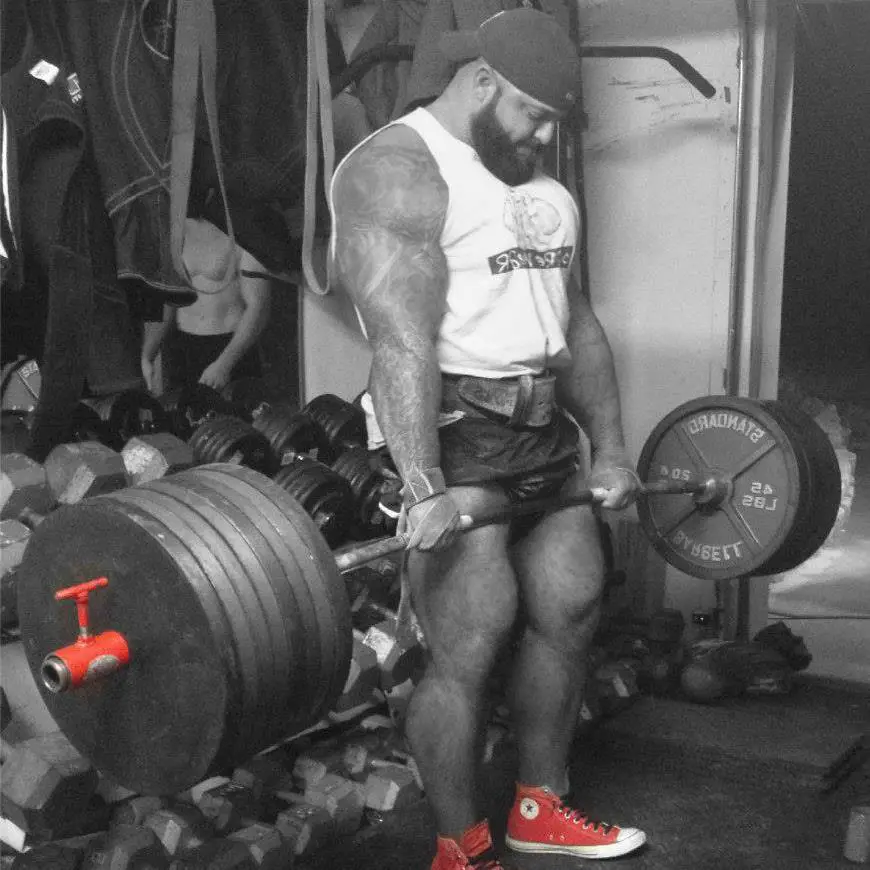A regular around here asked what I thought about partial movements because his shoulder has been bothering him and he used partials on the bench press.
His shoulder hurts sometimes and he mentioned he noticed he felt his pecs a lot more than regular bench and asked what I would suggest.
What are partial movements?
Well for some clowns out there it could be a half/quarter squat, not touching chest on bench, and deadlifting with the bar elevated more (rack pulls, block pulls, etc).
I won’t be getting in-depth here because I have a book I am writing that will be explaining these movements in detail, how to use them, and why you should use them.
Pros of Partial Movements
Lets go over the pros of partial movements.
Use More Weight
When using partial movements, you can use over 100% of your max on these sets. This will put an overload on your muscles, tendons, and nervous system which will help prepare your body for bigger weights. This additional weight is extremely helpful to help build up weak points.
Example:
Utilize board presses (bench partials) to overload your triceps and build a stronger lockout. Used correctly, your lockout will build up and you will be able to press more on a full-motion bench press.
Time Under Tension/Rebound Effect
This may or may not be agreed upon by other lifters but there is a time under tension/rebound effect that comes from doing partials or modified versions of lifts.
The time under tension from doing an equivalent of a 1-board board press or doing Romanian Deadlifts and stopping the bar just before the weights hit the ground puts an extreme amount of time under tension on your muscles.
The rebound effect is also stretched and eliminated which for overall strength and muscle gains is great, you are essentially adding more “resistance” to your muscles. If you have not learned how to use the rebound effect, I will be writing about it in the book as well so check it out. Note: I’m not talking about doing bounce rep deadlifts.
Work Around Injuries
Having a shoulder that is in pain or a hip that hurts makes it difficult to train at full capacity, (or sometimes at all) so having the ability to work around injuries is great.
Listening to your body and knowing when to stop the bar on bench before it goes too low and irritates your shoulder is crucial to stay lifting for years. If you have a hurt hip or knee, doing rack pull deadlifts or pin squats might be the best you can do for the time.
The name of the game is longevity folks.
Cons of Partial Movements
Just as there are many pros to partials, there are just as many cons as well.
Using Partials Permanently For Main Movements
Too many times you see someone quarter or half squatting and touting they can lift X amount of weight on squats. Partials are great for the ego because you can do much more weight than if you were to do the full range of motion.
Since they are lifting more, they think that they are doing the exercise correctly. This is just going to lead to injury and/or they are going to be tired of beating up their bodies for no gains.
Injury
If someone you know has been doing partials and tried to use the same weight with full range of motion, they probably had a bad time.
If you can’t bench more than 250 and you have been using 300 or more on partials for lockouts (or thinking you are a Billy Bad Ass) and go for a 300 full bench, you’re going to tweak something or your ego will hurt bad.
Confusing
When lifters think they hit a plateau, they look for anything that might be able to help them.
They see elite and advanced lifters using partial movements and it must be the way to break through the plateau.
Using partials can be confusing and should be avoided unless you have proper coaching.
Example:
If you are having a hard time off the floor of your deadlift, doing rack pulls won’t do anything to remedy that.
It is okay to not know or understand how to use partials, they are confusing and can waste energy if not implemented correctly.
Conclusion
Partial movements are great. Many people use them including Jonathan Byrd, Steve Shaw, and myself.
I think if used correctly, partials will help you build up your lifts and can really add some pounds to your total.
On the other side, if partials are used incorrectly, you can get injured very quickly.
If you have any comments or questions, leave them below. Be sure to share with friends so they don’t get injured doing half reps on squats and thinking they are a full squat.
Sign up for my monthly newsletter to receive a free e-book on weight loss that I wrote and receive exclusive subscription-only deals.
